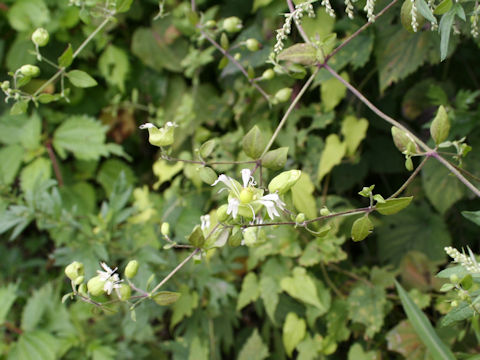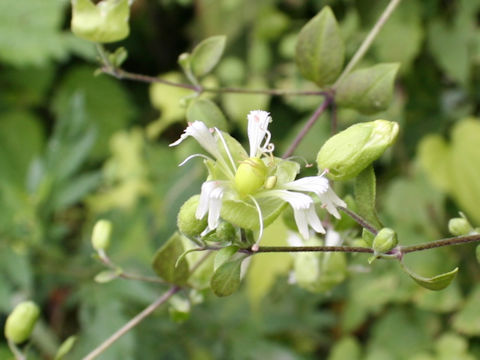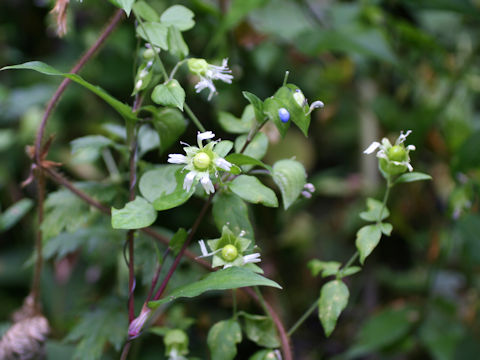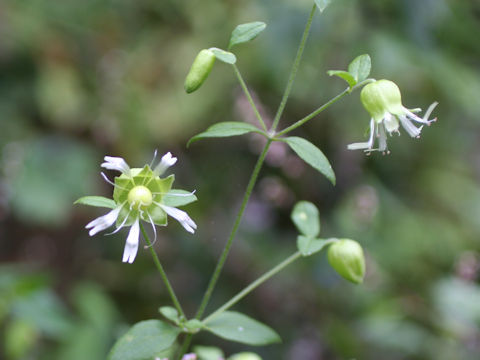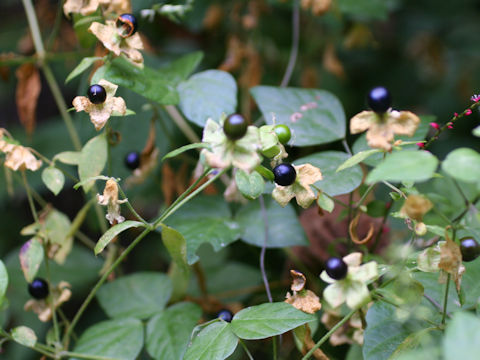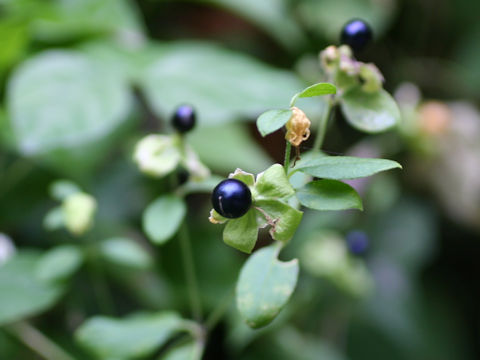
|
The Berry catchfly (Cucubalus baccifer var. japonicus) belongs to Caryophyllaceae (the Carnation family). It is a perennial herb that is distributed to various parts of Japan, as well as Taiwan, the Korean Peninsula, China, Amur, and Sakhalin. This herb grows in the mountains, its stems are thin and vine-like, and many branches are entwined with trees. The leaves are ovate and opposite. The characteristic flowers come in June to October. The calyx is hemispherical and curls up into a dish at the fruit stage. The Japanese name "Namban" means "foreign" in Japanese, but it only means that the shape of the flower is foreign, and it is a native species. In Taiwanese Chinese, it is called "狗筋蔓", and "狗筋蔓" (gou jin wan) in Chinese.
|

